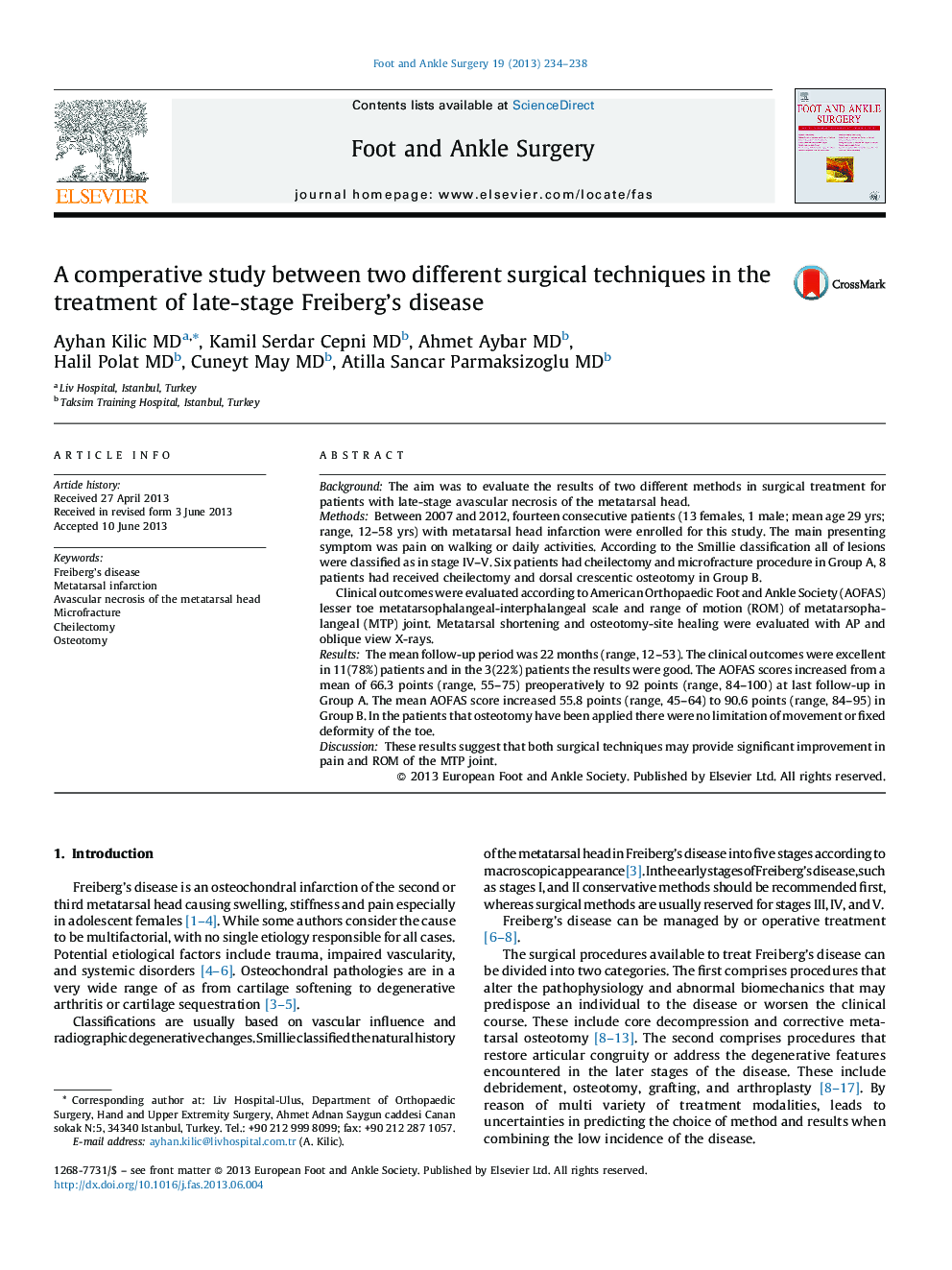| Article ID | Journal | Published Year | Pages | File Type |
|---|---|---|---|---|
| 4054739 | Foot and Ankle Surgery | 2013 | 5 Pages |
BackgroundThe aim was to evaluate the results of two different methods in surgical treatment for patients with late-stage avascular necrosis of the metatarsal head.MethodsBetween 2007 and 2012, fourteen consecutive patients (13 females, 1 male; mean age 29 yrs; range, 12–58 yrs) with metatarsal head infarction were enrolled for this study. The main presenting symptom was pain on walking or daily activities. According to the Smillie classification all of lesions were classified as in stage IV–V. Six patients had cheilectomy and microfracture procedure in Group A, 8 patients had received cheilectomy and dorsal crescentic osteotomy in Group B.Clinical outcomes were evaluated according to American Orthopaedic Foot and Ankle Society (AOFAS) lesser toe metatarsophalangeal-interphalangeal scale and range of motion (ROM) of metatarsophalangeal (MTP) joint. Metatarsal shortening and osteotomy-site healing were evaluated with AP and oblique view X-rays.ResultsThe mean follow-up period was 22 months (range, 12–53). The clinical outcomes were excellent in 11(78%) patients and in the 3(22%) patients the results were good. The AOFAS scores increased from a mean of 66.3 points (range, 55–75) preoperatively to 92 points (range, 84–100) at last follow-up in Group A. The mean AOFAS score increased 55.8 points (range, 45–64) to 90.6 points (range, 84–95) in Group B. In the patients that osteotomy have been applied there were no limitation of movement or fixed deformity of the toe.DiscussionThese results suggest that both surgical techniques may provide significant improvement in pain and ROM of the MTP joint.
